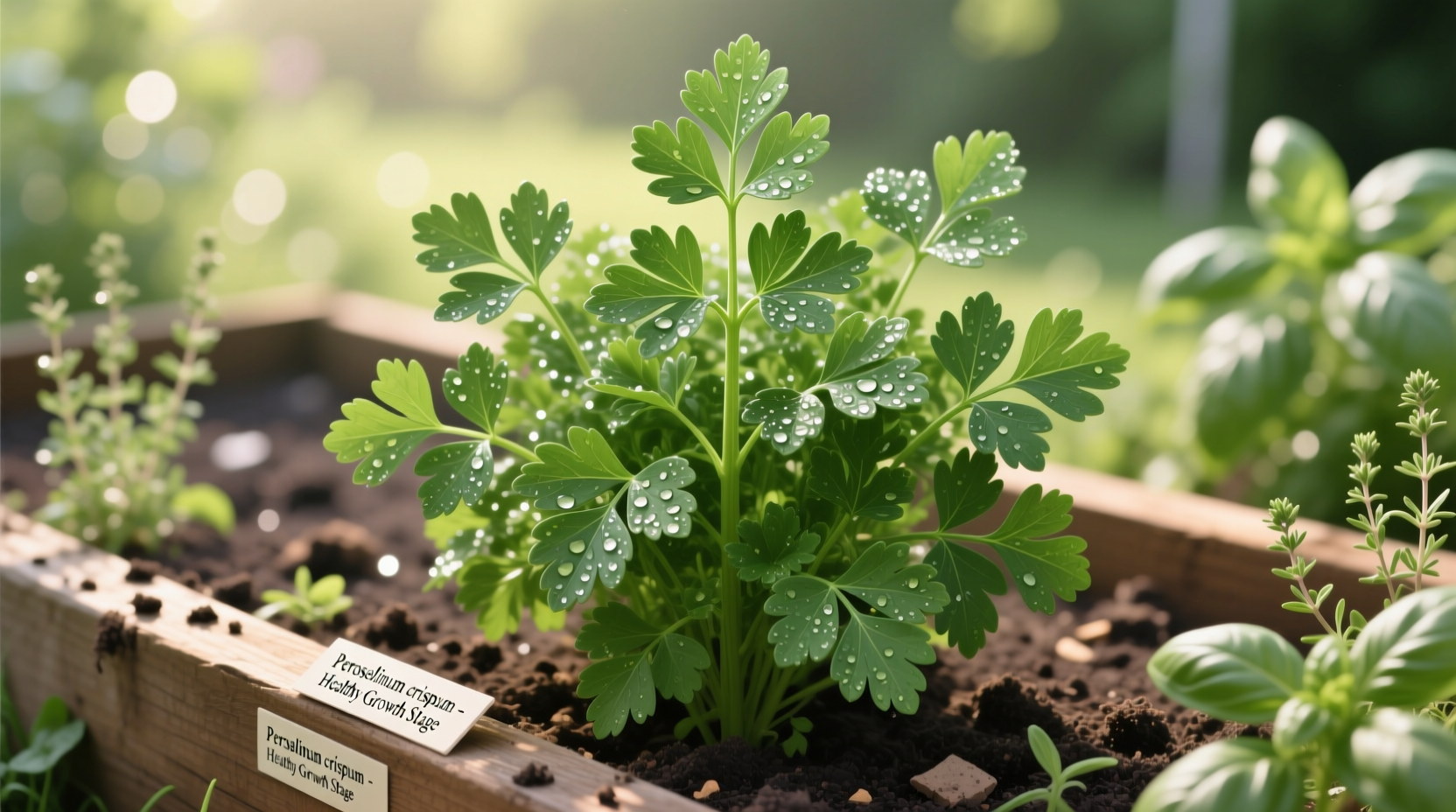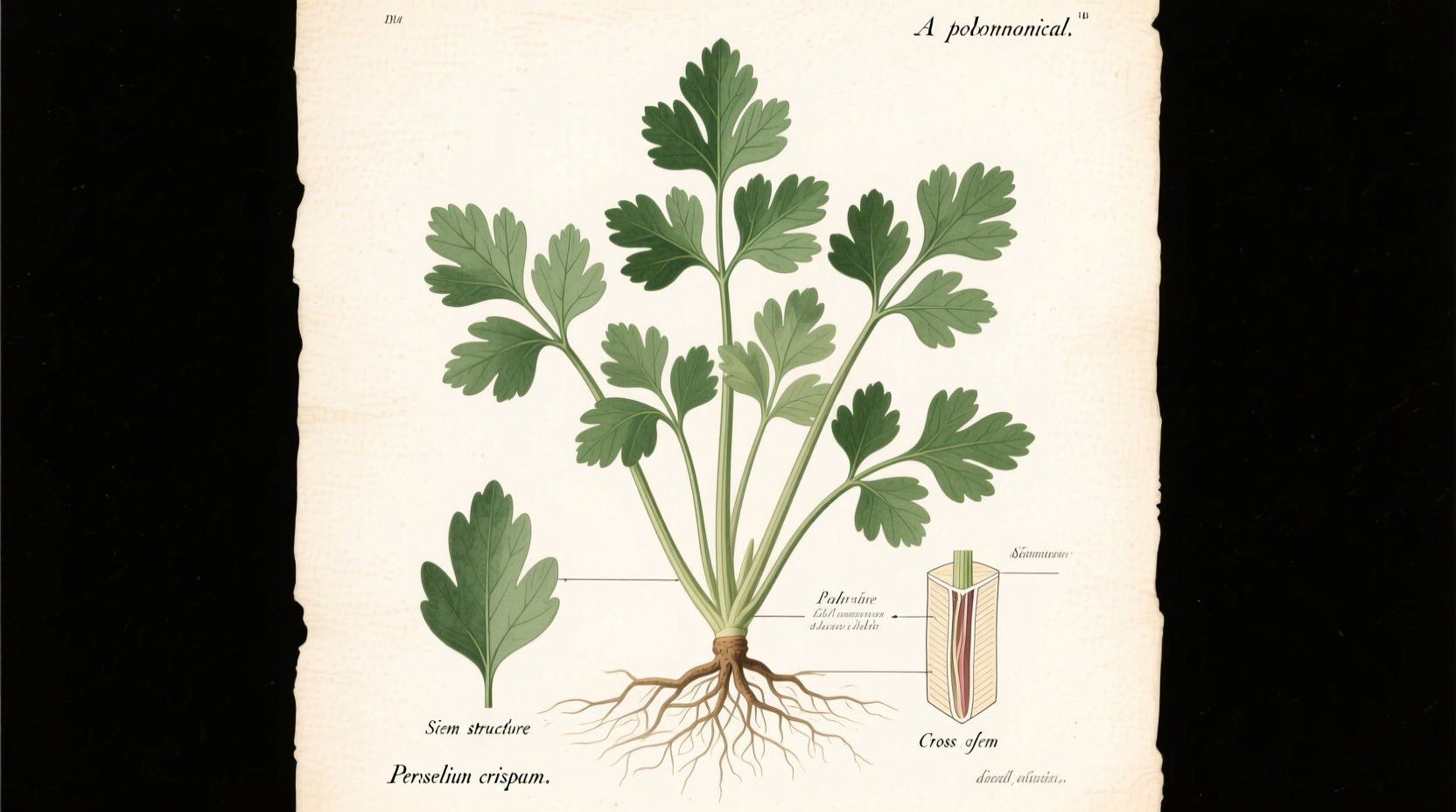Yes, parsley is technically a biennial plant but commonly grown as an annual in most gardens. In USDA hardiness zones 5-9, it can survive winter and return for a second year, though flavor and productivity decline after flowering. For reliable harvests, most gardeners replant parsley annually.
Discover exactly how parsley behaves in your garden and learn practical strategies to maximize your harvest—whether you're growing it in containers, raised beds, or garden plots. This guide cuts through the confusion about parsley's growth cycle with actionable advice from botanical research and horticultural best practices.
Understanding Parsley's True Growth Cycle
Botanically classified as Petroselinum crispum in the Apiaceae family, parsley follows a specific growth pattern that explains its confusing classification. While many gardening resources oversimplify this, the reality involves nuanced seasonal behavior that directly impacts your harvest.
According to the USDA Agricultural Research Service, parsley completes its life cycle over two growing seasons under ideal conditions. During the first year, it focuses energy on leaf production—the part we harvest. In the second year, it shifts to flowering and seed production, at which point leaf quality deteriorates significantly.

Why Most Gardeners Treat Parsley as an Annual
Despite its biennial nature, practical gardening experience shows why annual replanting yields better results. Cornell University's School of Integrative Plant Science notes that after winter exposure, returning parsley plants often bolt (produce flowers) prematurely when temperatures rise, making leaves bitter and unusable.
| Growing Approach | Advantages | Limitations |
|---|---|---|
| Annual cultivation | Consistent flavor quality, higher yield, disease resistance | Requires replanting each season |
| Biennial cultivation | Potential second-year harvest in mild climates | Bitter leaves after flowering, lower productivity |
| Perennial in zones 8-9 | Continuous harvest with proper care | Requires significant winter protection |
When Parsley Can Survive Multiple Years
The Royal Horticultural Society confirms parsley can behave as a short-lived perennial in USDA hardiness zones 8-9 with proper care. In these climates, with adequate mulching and protection from extreme cold, established plants may return for 2-3 seasons.
However, the University of California Master Gardener Program emphasizes that even in favorable climates, second-year plants typically produce fewer leaves with stronger, less desirable flavors as the plant directs energy toward reproduction. This biological imperative explains why commercial growers and serious home gardeners prioritize fresh plantings.
Maximizing Your Parsley Harvest: Practical Strategies
Whether you're working with limited space or planning a full herb garden, these evidence-based techniques will optimize your results regardless of your climate zone.
Optimal Planting Schedule
For continuous harvest, succession planting every 3-4 weeks from early spring through late summer ensures a steady supply of tender leaves. The National Gardening Association recommends starting seeds indoors 8-10 weeks before last frost for earliest harvests.
Container Growing Advantages
Growing parsley in containers provides critical flexibility. You can move pots to protected locations during extreme weather, extending the harvest season. Research from Michigan State University shows container-grown parsley maintains better flavor consistency when temperatures are controlled.
Winter Protection Techniques
If attempting overwintering in zones 5-7:
- Apply 3-4 inches of organic mulch after first frost
- Cut back foliage to 2 inches above soil line
- Use cold frames or row covers for temperatures below 20°F (-7°C)
- Water sparingly during dormancy
Common Misconceptions That Hurt Your Harvest
Many gardeners make preventable mistakes based on incomplete understanding of parsley's growth habits. The most frequent errors include:
- Assuming all "perennial" herbs behave similarly: Unlike rosemary or thyme, parsley lacks the woody structure that supports true perennial growth
- Waiting too long to harvest: Regular picking actually encourages more leaf production and delays bolting
- Planting too early in spring: Cold soil temperatures below 40°F (4°C) significantly delay germination
Climate-Specific Growing Recommendations
Your geographic location dramatically affects parsley's performance. The USDA Plant Hardiness Zone Map provides essential guidance:
- Zones 3-4: Strictly annual cultivation; start indoors for 3-4 month harvest window
- Zones 5-7: Possible overwintering with protection; expect 18-24 month productivity
- Zones 8-9: Potential perennial behavior with proper care; may produce for 2-3 years
- Zones 10-11: Treat as annual due to heat sensitivity; grow as cool-season crop
Remember that microclimates in your specific garden can modify these general guidelines. South-facing walls, protected courtyards, or elevated beds may create conditions that extend parsley's productive life.
When to Replace Your Parsley Plants
Watch for these clear indicators that it's time to replant:
- Flowering stalks emerging from center of plant
- Leaves developing noticeably stronger, bitter flavor
- Reduced new growth despite proper care
- Visible signs of disease or pest infestation
Commercial herb growers typically replace parsley beds annually to maintain consistent quality—a practice home gardeners can adapt for superior results.
Extending Your Harvest Without Replanting
While you can't change parsley's biological nature, these techniques maximize your yield from each planting:
- Harvest outer stems first, cutting 1 inch above soil line
- Maintain consistent moisture (1-1.5 inches weekly)
- Provide partial shade in hot summer months
- Apply balanced organic fertilizer monthly during growing season
By understanding parsley's true growth cycle and working with its natural tendencies rather than against them, you'll enjoy more abundant, flavorful harvests throughout the growing season.











 浙公网安备
33010002000092号
浙公网安备
33010002000092号 浙B2-20120091-4
浙B2-20120091-4